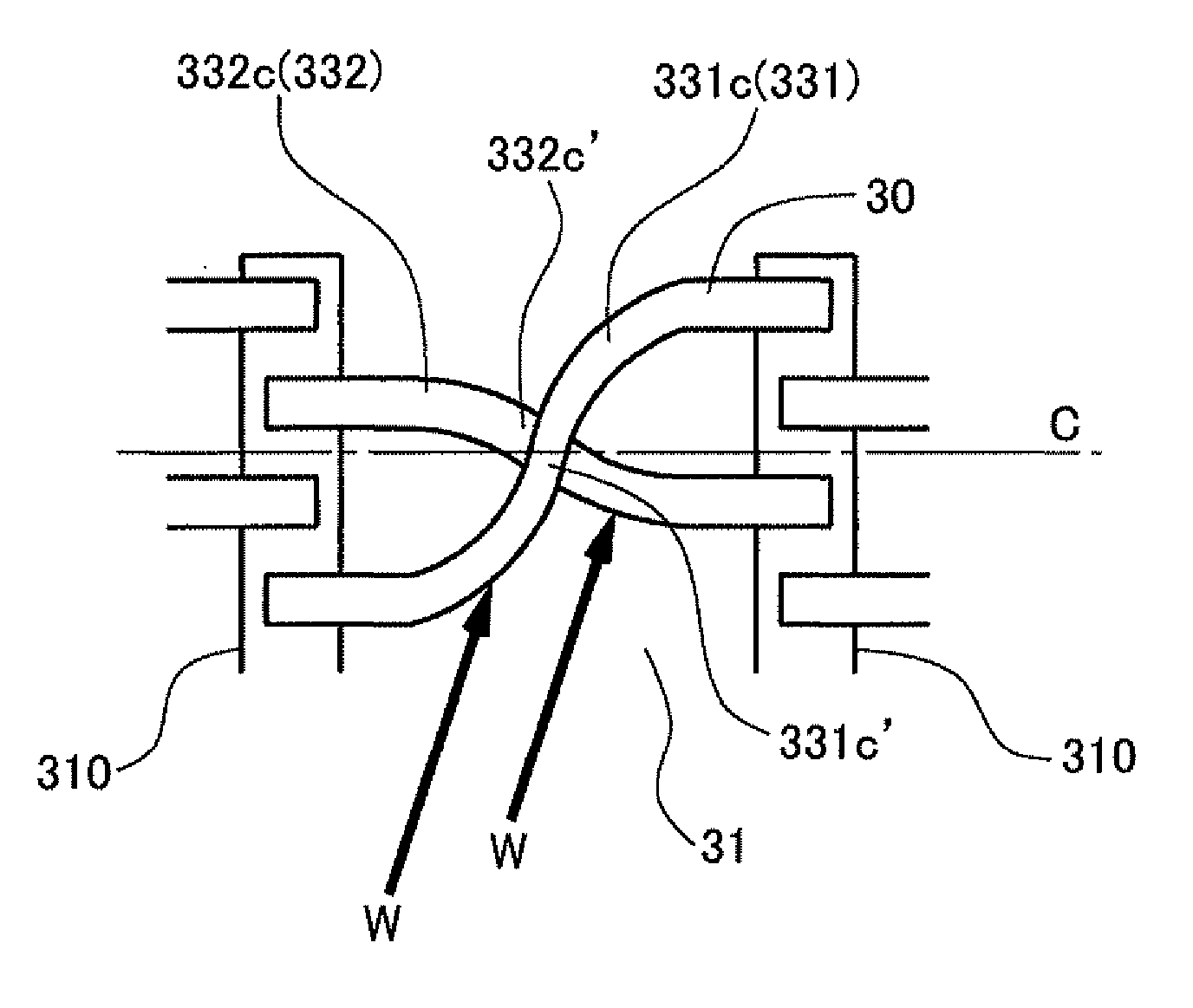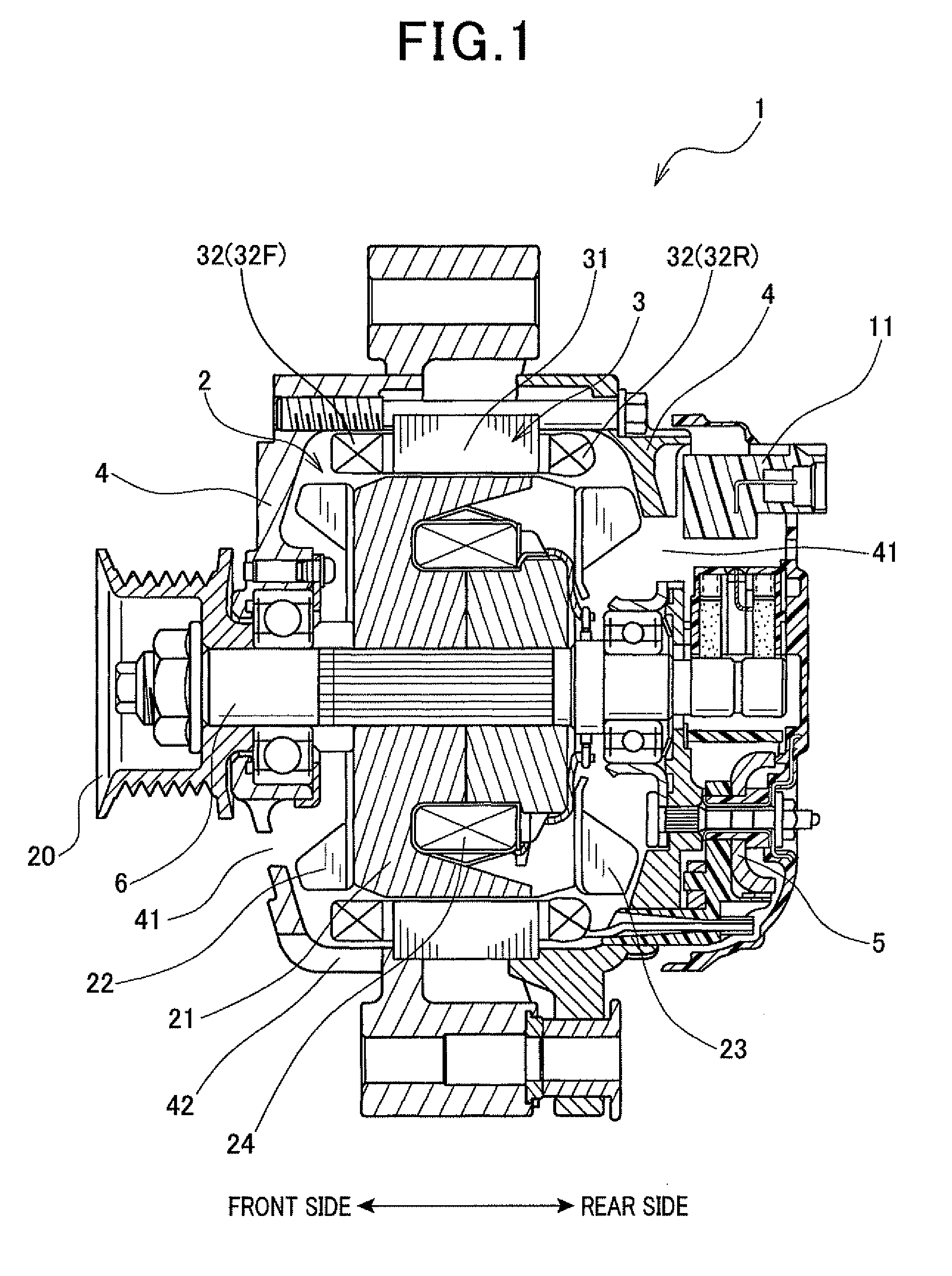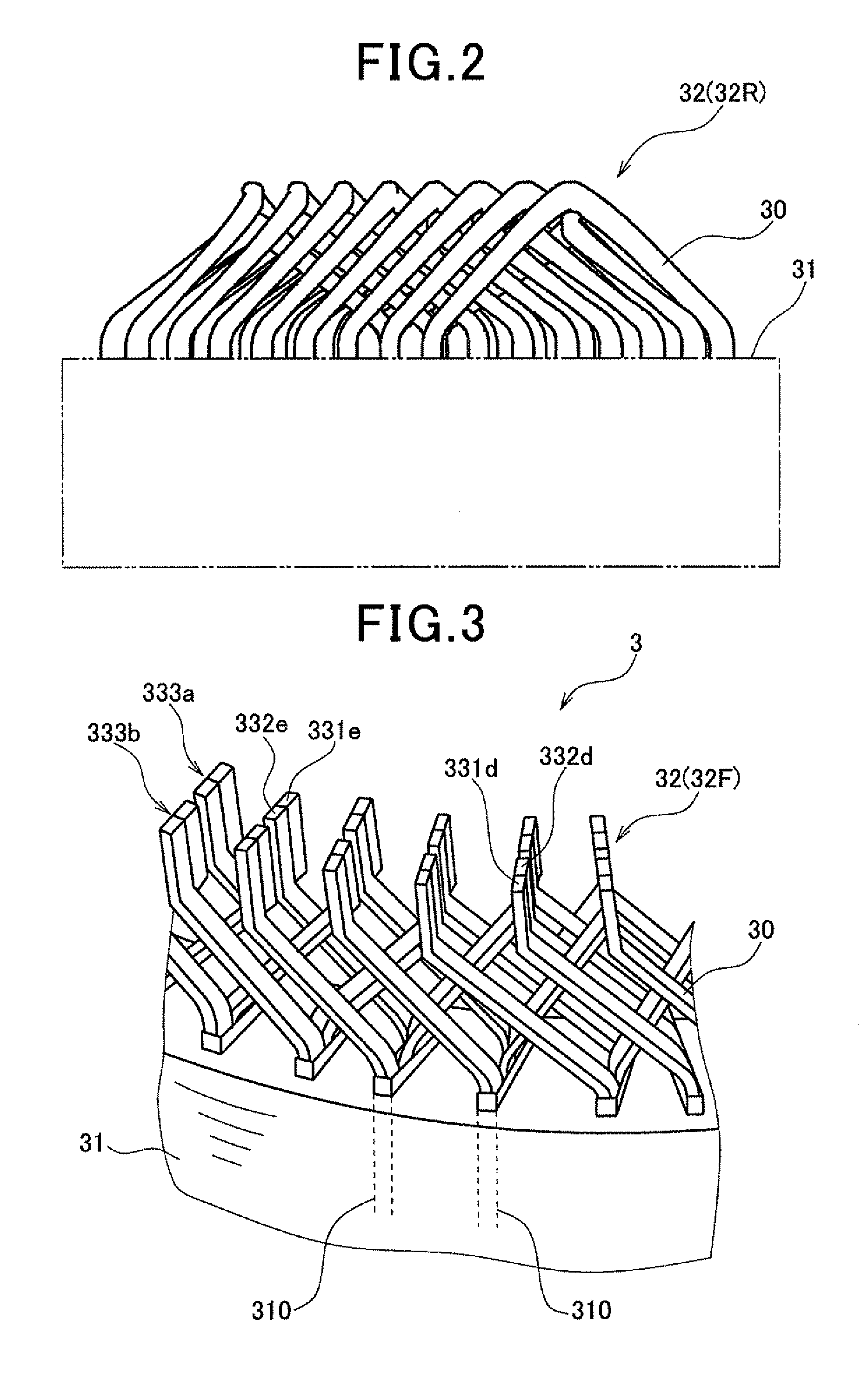Stator for electric rotating machine
a technology of electric rotating machines and stator coils, which is applied in the direction of windings, cooling/ventilation arrangements, dynamo-electric components, etc., can solve the problems of difficult effective the ineffective cooling of the turn portions of the small electric conductor segments, so as to reduce the resistance of the stator coil, increase the flow rate of cooling air, and effectively cool the
- Summary
- Abstract
- Description
- Claims
- Application Information
AI Technical Summary
Benefits of technology
Problems solved by technology
Method used
Image
Examples
Embodiment Construction
[0022]FIG. 1 shows the overall configuration of an automotive alternator 1 according to an exemplary embodiment. The alternator 1 is designed to be used in a motor vehicle, such as a passenger car or a truck.
[0023]As shown in FIG. 1, the alternator 1 includes a rotor 2, a stator 3, a frame 4, a rectifier 5, a voltage regulator 11 and a pulley 20.
[0024]The rotor 2 includes a rotating shaft 6, a pair of Lundell-type magnetic pole cores 21 and a field coil 24. The rotating shaft 6 is rotatably supported by the frame 4. The rotating shaft 6 has the pulley 20 mounted on a front end portion (i.e., a left end portion in FIG. 1) thereof, so that it can be driven by an internal combustion engine (not shown) of the vehicle via the pulley 20. Each of the magnetic pole cores 21 has a plurality of magnetic pole claws. The field coil 24 is made of, for example, an insulation-treated copper wire and wound into a hollow cylindrical shape. The magnetic pole cores 21 are fixed on the rotating shaft 6...
PUM
 Login to View More
Login to View More Abstract
Description
Claims
Application Information
 Login to View More
Login to View More - R&D
- Intellectual Property
- Life Sciences
- Materials
- Tech Scout
- Unparalleled Data Quality
- Higher Quality Content
- 60% Fewer Hallucinations
Browse by: Latest US Patents, China's latest patents, Technical Efficacy Thesaurus, Application Domain, Technology Topic, Popular Technical Reports.
© 2025 PatSnap. All rights reserved.Legal|Privacy policy|Modern Slavery Act Transparency Statement|Sitemap|About US| Contact US: help@patsnap.com



